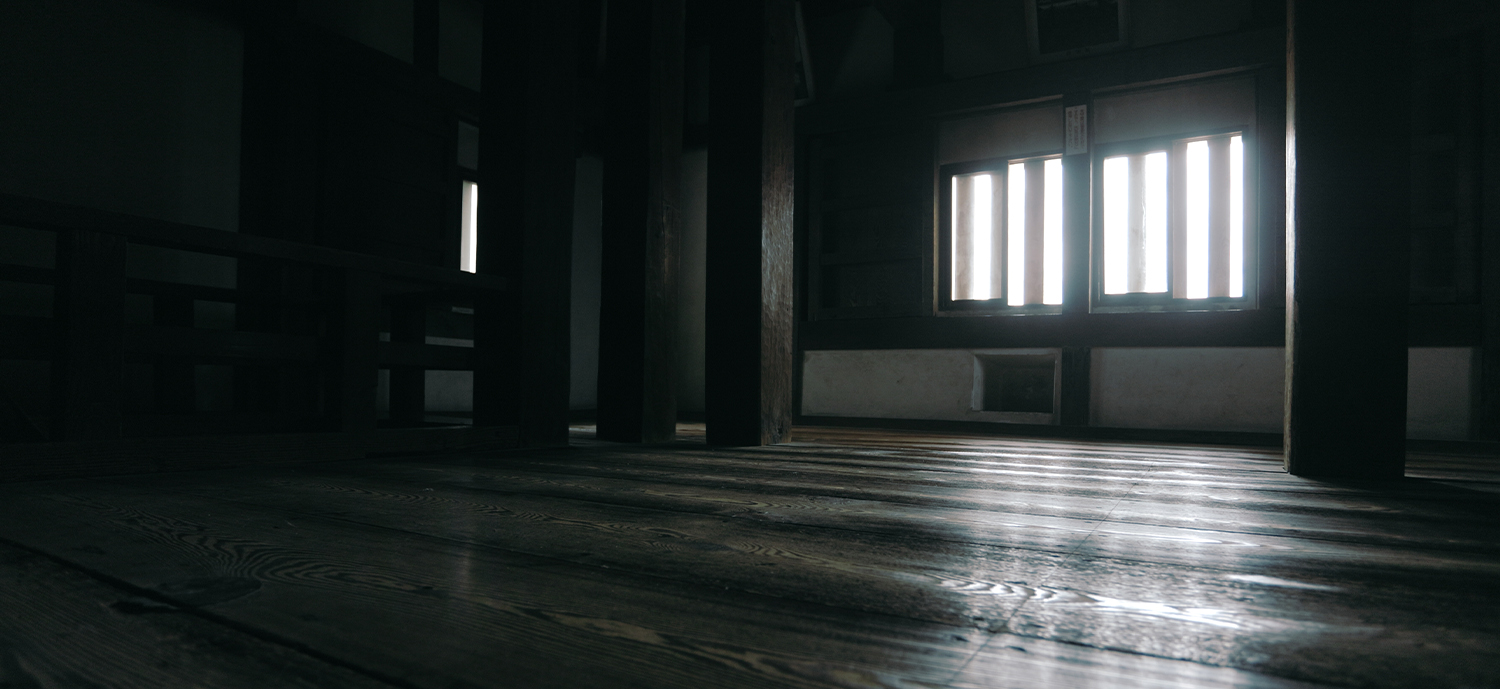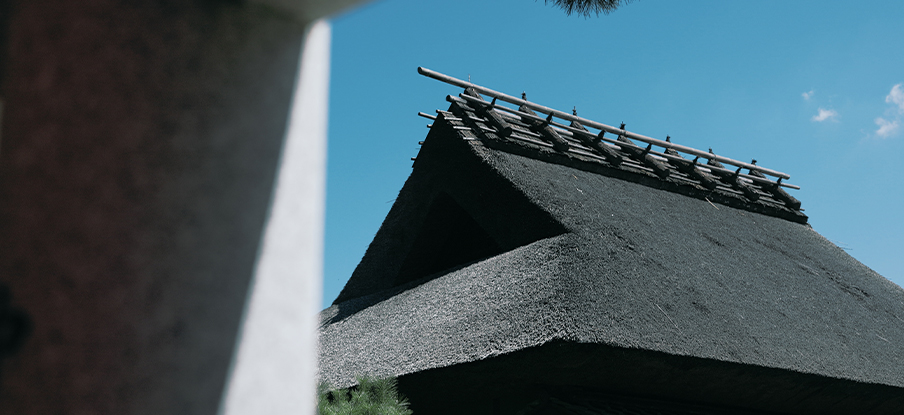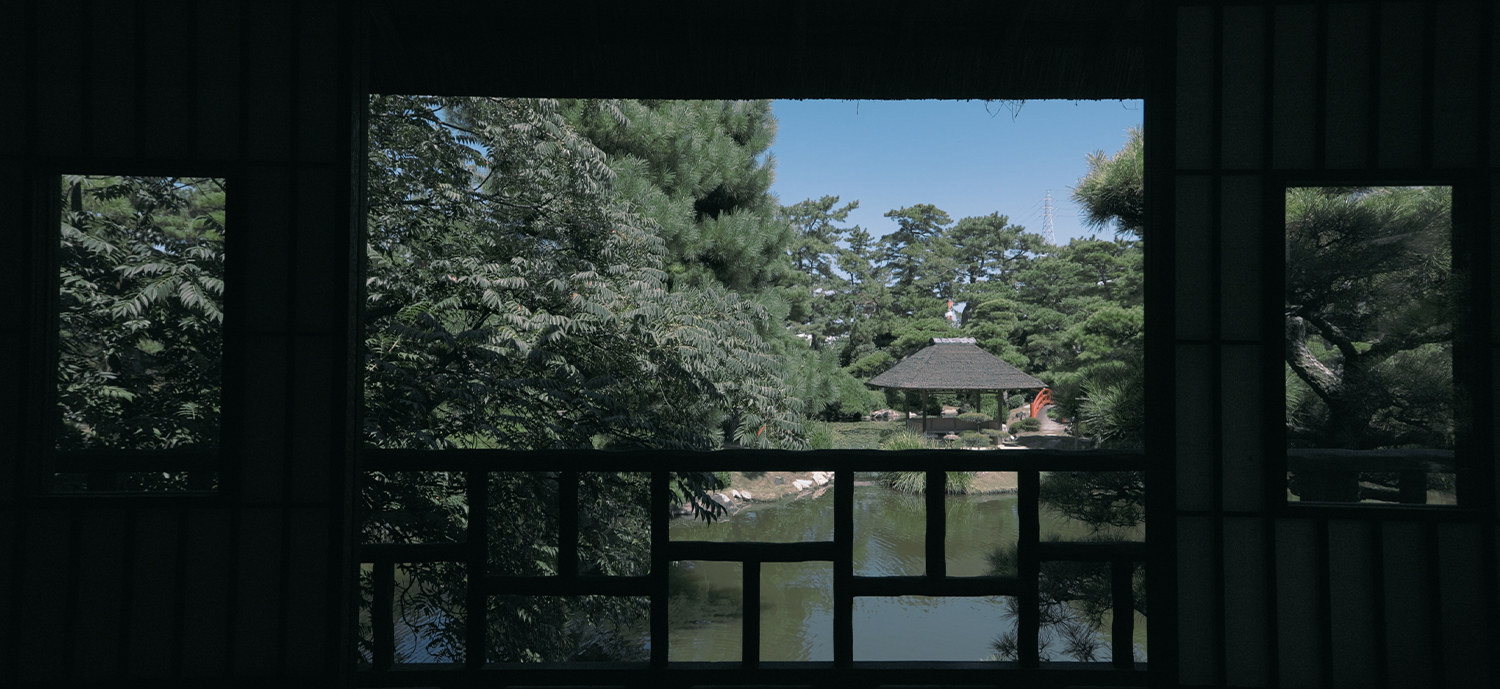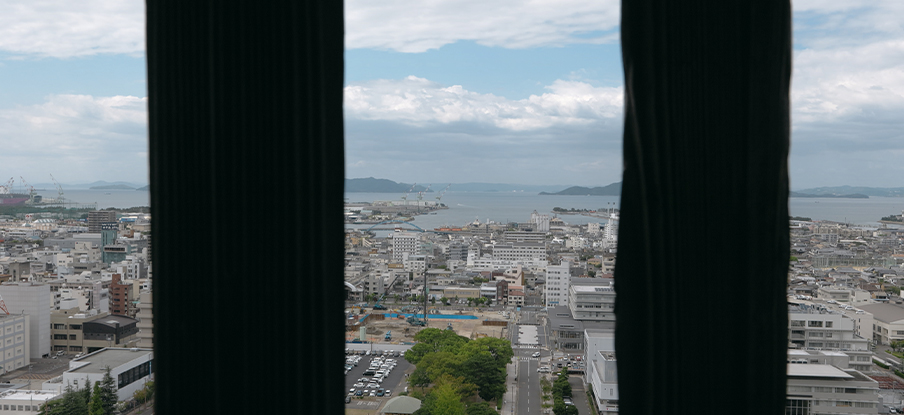Kyogoku Clan
The Kyogoku clan, originally from Omi Province, which is now Shiga Prefecture, is a prestigious daimyo family with a lineage dating back to the Kamakura period. They came to be known as Kyogoku from their residence in Kyogoku in Kyoto and their ownership in northern Omi during the Kamakura period. During the Nanboku-cho period, figures like Kyogoku Takauji, who gained fame as a Basara daimyo, and Kyogoku Takatsugu, who thrived under Oda Nobunaga’s reign, survived the turbulent times and revived their family. In the Edo period, Kyogoku Takakazu, Takatsugu’s grandson, became the first lord of Marugame as the head of the Kyogoku Marugame clan. For about 210 years until the Meiji Restoration, he ruled over western Sanuki and laid the foundation for modern Marugame.

Four-Eye Crest
The Kyogoku family crest originates from the “Yotsu-me Yuimon,” derived from their renowned ancestor of the Omi Genji clan. During your Marugame Castle stay experience, this four-eye crest is adorned throughout, from the dining area and amenity goods to the entrance curtain, evoking the atmosphere of the feudal lords.
Marugame Castle Site
With a history of over 400 years since its construction, Marugame Castle is called the “Castle of Stone Walls” for its height and beautiful stone walls. Holding one of the twelve surviving castle keeps in Japan, it has been selected as one of Japan’s top 100 castles. The castle keep seen from the main Gate exudes dignity, while in the evening, it radiates a gentle aura, soothing the heart.
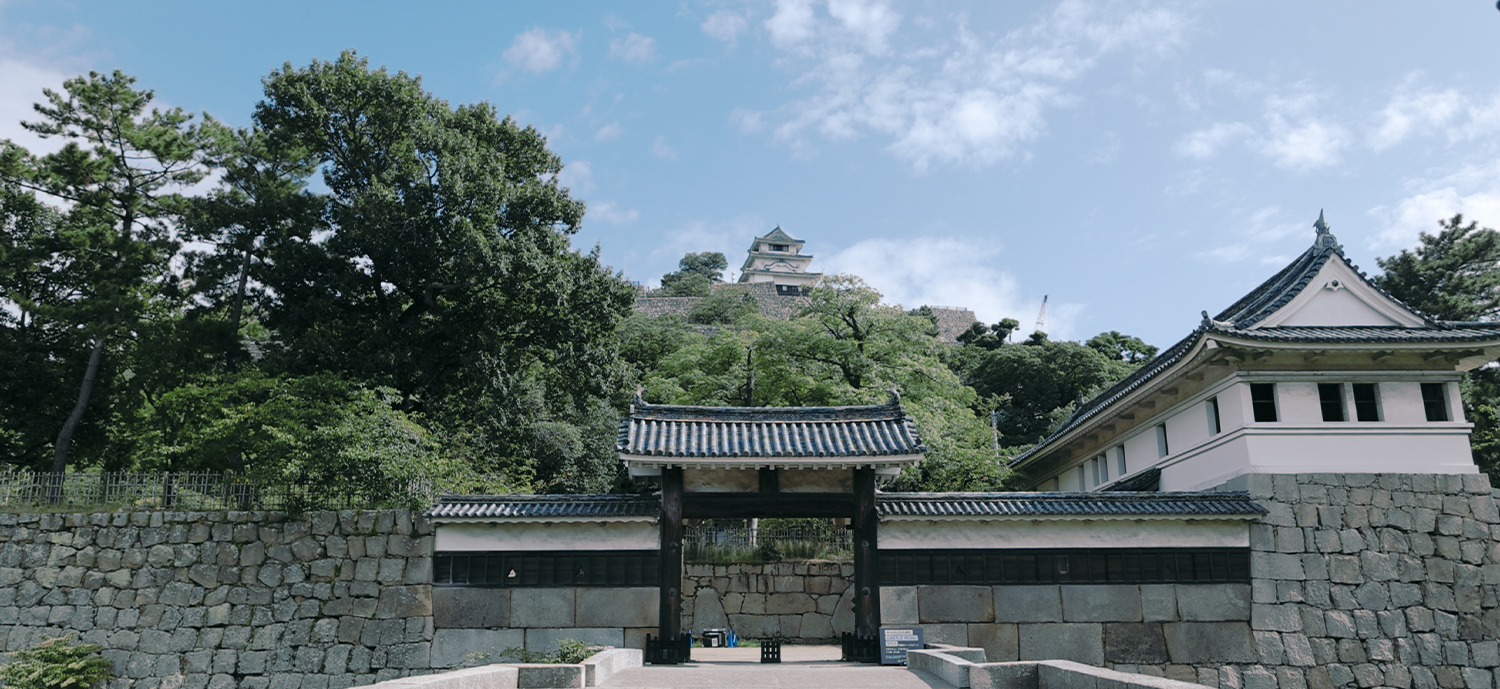
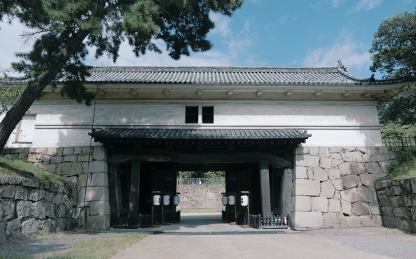
Ote Ichi no mon / Ni no mon
The Ote Ichi no mon, constructed in 1670 (Kanbun 10), is a turret gate. During the feudal era, it was also known as “Taiko-mon” because it signaled the time to the castle town using a time drum. It is designated as an Important Cultural Property of Japan. Today, it continues the tradition from the Edo period, with the drum being struck at noon. Only three castles in all of Japan have both a keep and an main gate, and among them, Marugame Castle is the only one where the Taiko-mon drums are struck year-round.
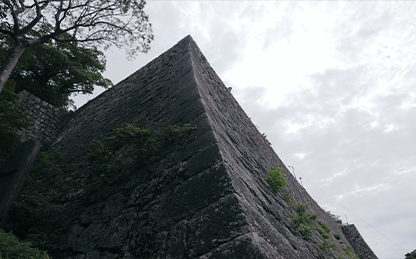
Japan’s Tallest Stone Walls
The height of the stone walls, stacked in four layers with a high and beautiful curve leading to the castle keep, is the tallest in Japan. The contrast between the white walls of the castle keep and the stone walls is beautifully fitting for the title of “Castle of Stone Walls.”

Enjyukaku Bekkan
Built in 1933 (Showa 8), Enjyukaku Bekkan stands next to the city’s guest house known as “Enjyukaku.” Materials such as flooring, ceilings, long handrails, transoms, and decorative fittings were used from the Kyogoku clan’s mansion in Azabu, Tokyo, preserving the atmosphere of the past. While the main Enjyukaku building was dismantled due to aging, the annex building was also facing deterioration, but responding to the strong desire of the community for its preservation and utilization, it underwent renovation to realize this castle stay experience.
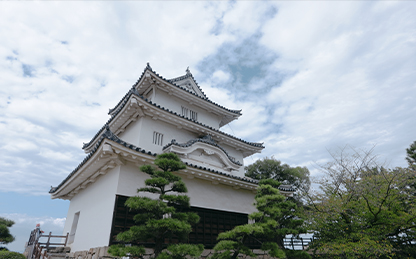
Japan’s Smallest Castle Keep
The castle keep is one of twelve remaining wooden castle keeps in Japan that retains its original form. Although it is called the “smallest castle keep in Japan” with its three layers and three floors, it is a well-balanced structure with beautifully arranged Karahafu-style and Chitori-style gables. It is designated as an Important Cultural Property of Japan.
Nakazu Bansho-en
A daimyo garden built by Kyogoku Takatoyo, the second lord of the Kyogoku Marugame clan, as his villa here in Nakazu. At the center of the garden lies the Eight Scenic Views Pond, modeled after Lake Biwa in Omi, the ancestral land of the Kyogoku family. Walking through the vast garden, one can imagine the longing felt by the feudal lords.
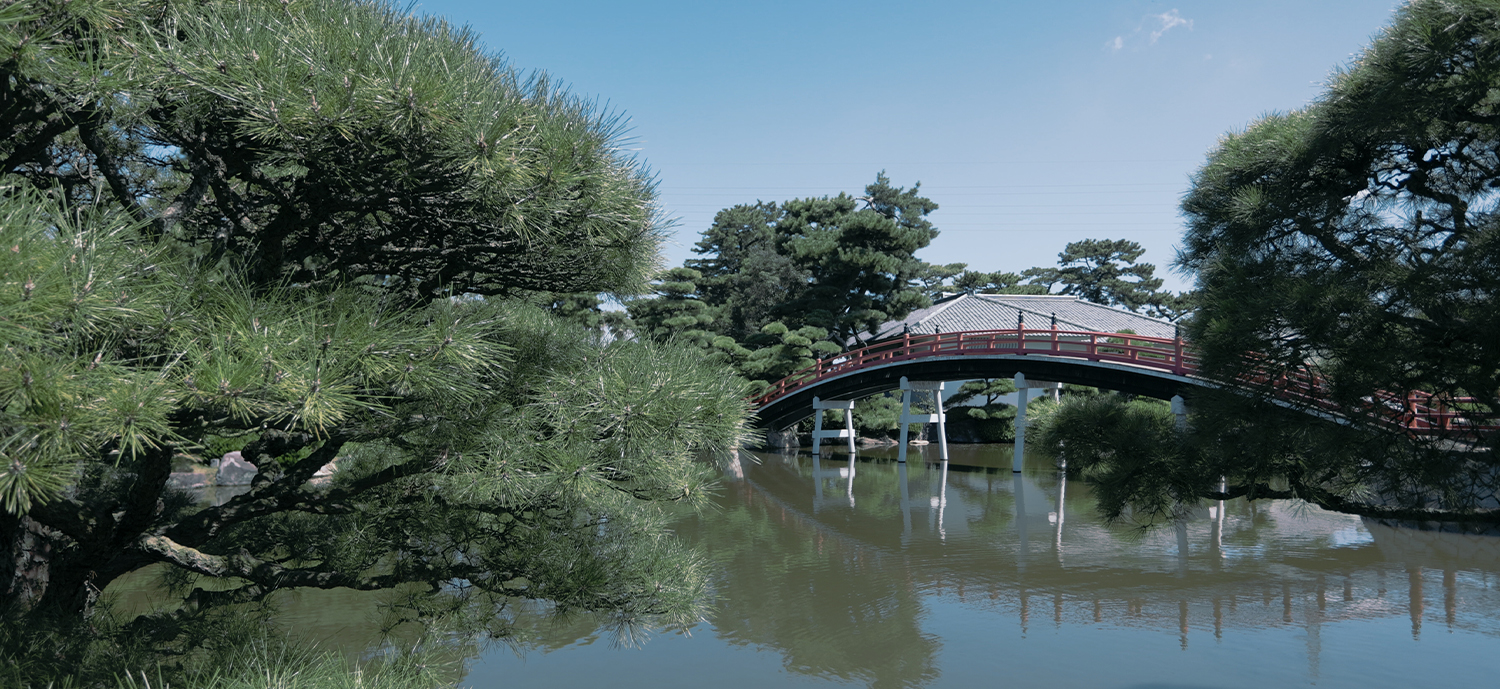

Kanchoro
Kanchoro is said to be Japan’s oldest existing tea room, passed down since the Edo period. It was a tea house where one could enjoy tea while observing the ebb and flow of the Seto Inland Sea’s tides.
Shiwaku Islands and Main Island
The Shiwaku Islands consist of 28 islands, including the Honjima, Hiroshima, Ushijima, and Teshima. “Shiwaku” is said to derive from the process of “burning salt” during salt production, or from the meaning of “surging tide.” Among the islands, Honjima served as the base of the Shiwaku naval forces, and many historical resources, such as the Shiwaku Navy’s administrative office, the “Shiwaku Kinbansho” designated as a national historic site, and the Kasashima Traditional Buildings Preservation District in Marugame City, where old townscapes remain, are carefully preserved, conveying the spirit of the people who lived by the sea.
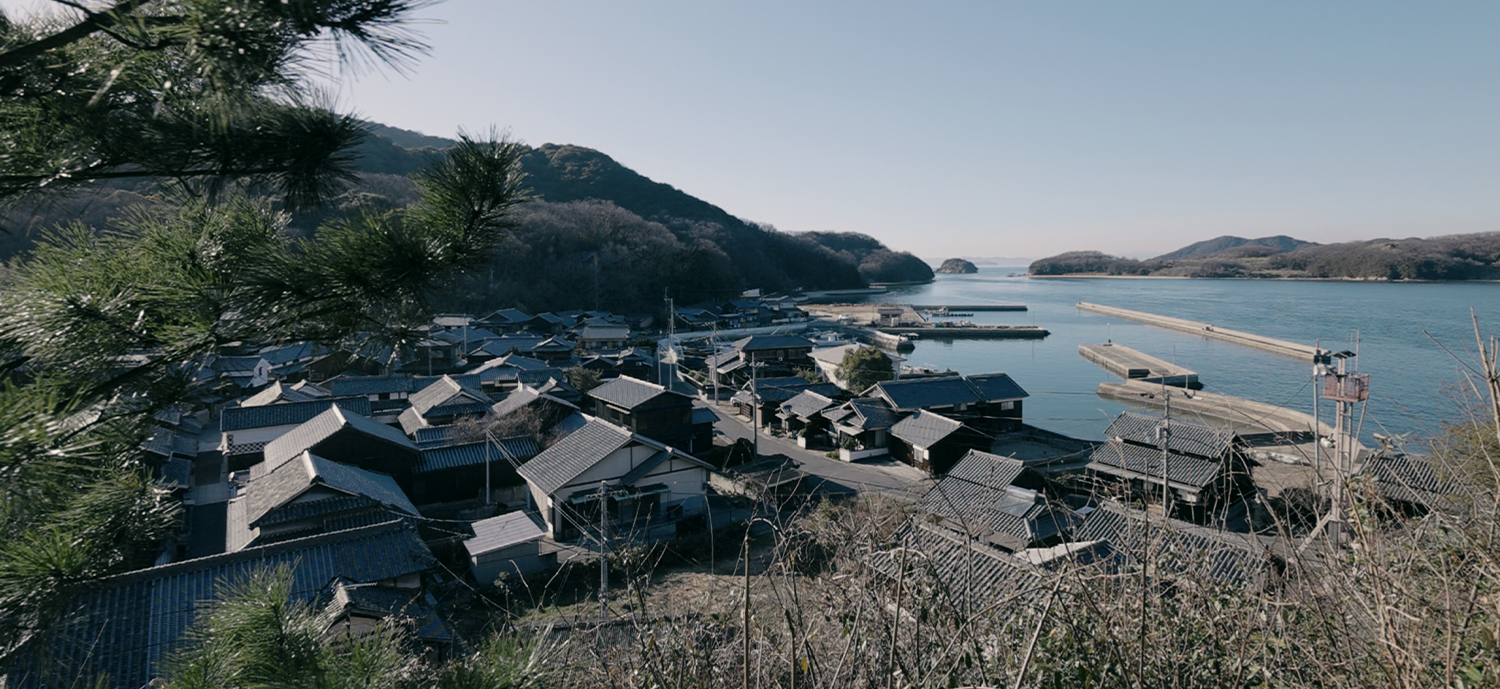
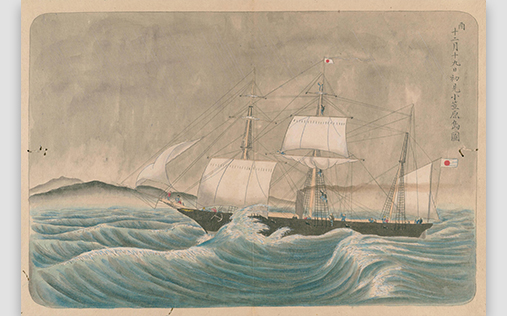
Shiwaku Naval Forces
The Shiwaku Naval Forces, consisting of 650 sailors who were granted 1250 koku of land for their contributions to supplying goods for figures such as Nobunaga, Hideyoshi, and Ieyasu, have jointly governed. Moreover, many of the crew members of the Kanrin Maru, which crossed the Pacific Ocean at the end of the Edo period, were from Shiwaku, literally born and bred sailors.

[Nationally Designated Important Traditional Buildings Preservation Area] Shiwaku Honjimachi Kasashima Traditional Building Groups Preservation Area
This port, with its harbor open to the north and surrounded by hills on three sides, is considered one of the best in the Shiwaku Islands, and it flourished as the base of the Shiwaku Naval Forces and Shiwaku merchant ships since the Middle Ages. The town’s former layout is well preserved, with a charming townscape passed down from that time.
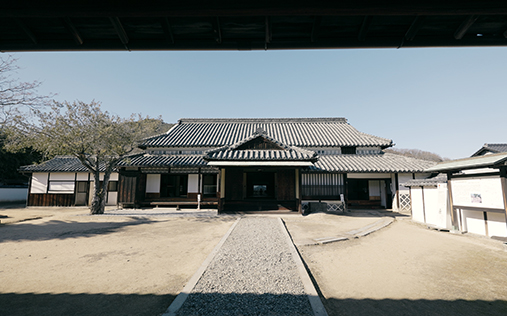
Shiwaku Kinbansho Site
This was the administrative office overseeing the governance of the Shiwaku Islands, which, despite being under the direct control of the central government, practiced internal autonomy. The current building was rebuilt in 1860 (Man’en 1). It is rare in Japan to find existing buildings like this one referred to as “kinbansho.” Presently, it is open to the public as a historical museum, exhibiting valuable historical documents including official seals. It has been designated as a national historic site.
Konpira Pilgrimage
The Konpira Pilgrimage has been revered by many daimyo lords of Shikoku, including the Kyogoku family, since the mid-Edo period, and later spread throughout the country. In the mid-Edo period, it became popular to visit “Konpira-san” at least once in a lifetime, and Marugame in particular flourished as the gateway to pilgrimage, attracting many visitors

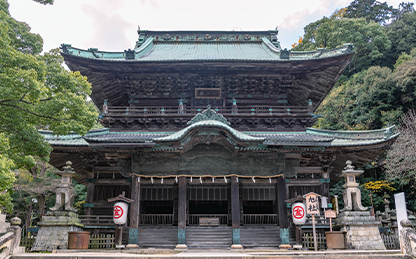
Kotohira-gu Shrine
Kotohira-gu Shrine, also affectionately known as Konpira-san, has been revered nationwide as a deity of the sea, as well as for prayers for abundant harvests, prosperous fishing, and thriving businesses since ancient times. The path to the main shrine consists of 785 steps from the entrance, and another 1,368 steps lead to the inner shrine, making it famous for its long stone stairways.

Konpira Kaido
Since the mid-Edo period, when pilgrimage to Kotohira-gu Shrine became popular, many worshippers visited the five highways leading to the shrine, with the Marugame Kaido being the most prosperous among them. The 12 km route from Tasuke-toro in Marugame Port to Taka-toro in Kotohira still retains its historic charm.
Marugame Uchiwa
Marugame Uchiwa, born at the gateway to the Kotohira Pilgrimage, is a traditional craft that Marugame has produced. Accounting for 90% of the national market share, these uchiwa continue to represent Marugame’s traditional craftsmanship.

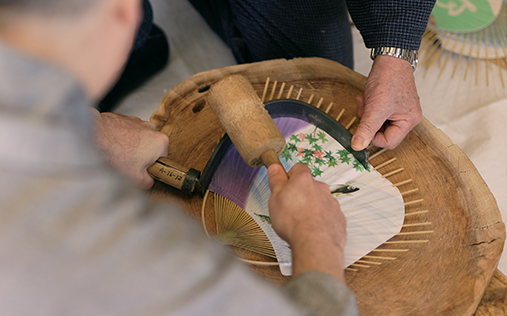
It is said that the tradition began in the early Edo period when red-lacquered uchiwa with Marugame’s seal were made as souvenirs for pilgrims visiting Kotohira. During the Tenmei era (1781-1789), Marugame’s ometsuke (inspector-genera), Seyama Noboru, encouraged the production of these uchiwa as a side job for samurai, contributing to the development of Marugame’s representative local industry. Currently, the annual production volume is approximately 83 million uchiwa, boasting 90% of the national market share, and in May 1997, it was designated as a traditional craft of Japan.


